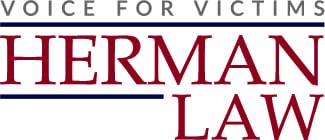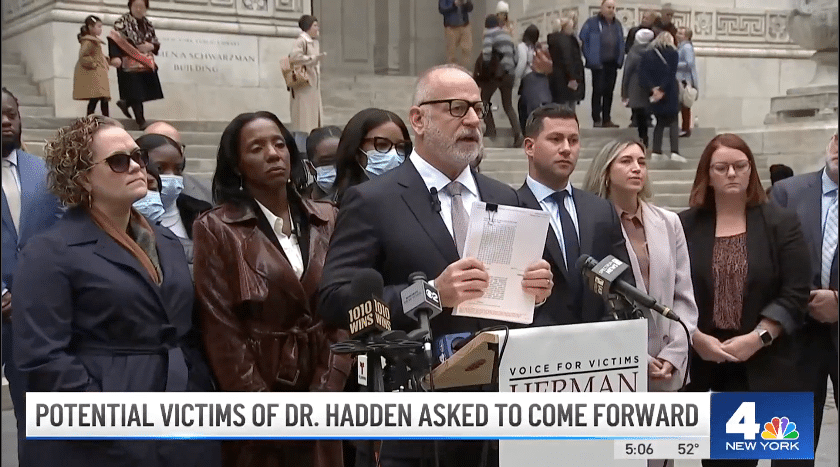Lawyer Jeff Herman and his practice released the Predator Priest Index, a searchable list of priests accused of sexual abuse.
By Joseph Ostapiuk | jostapiuk@siadvance.com
STATEN ISLAND, N.Y. — “From teenagers to 92 years old” was the answer Jeff Herman, a nationally-recognized trial lawyer for survivors of sexual abuse, said when asked the range of the ages of his clients in cases against the Catholic Church.
The matter of sexual abuse in the church is not the issue of a previous generation, but an active and still-pervasive issue that Herman works to seek justice for.
Herman, who has been pursuing sexual-abuse cases since 1997 and has offices in both New York and Florida, recently released a searchable list entitled the “Predator Priest Index,” which contains information about clergy members and individuals associated with the Catholic Church who have been accused of sexually abusing children.
In addition to providing an overview of the allegations, the list provides details about the alleged abusers, along with the churches and parishes where they worked. Because many of the allegations were reported after the statute of limitations expired, many cases have not been heard in a court of law.
The Archdiocese of New York previously unveiled a list of 120 bishops, priests and deacons, including clergy who lived on Staten Island, who were credibly accused of sex abuse, or who were the subject of a claim made to the Independent Reconciliation and Compensation Program (IRCP) that was deemed eligible for compensation.
The Advance also reported on 15 deceased priests who spent time on Staten Island who were included on the Archdiocese’s list.
Herman said that his practice compiled information from a multitude of sources to compile the searchable list, including the Bishop Accountability database, the Archdiocese lists and information gathered from his practice’s cases.
The Predator Priest Index includes names the Advance previously reported, including Monsignors Francis Boyle and Charles Coen, but also excludes some names included in the Archdiocese list, including Rev. Eugene Hicks.
Herman said that some of the cases he is pursuing have “predators who weren’t on any of these lists,” and that he considers the searchable index an “ongoing and sort-of evolving” record of accusations.
He said that more names would be added to the index, including “a few notorious accused predators at Catholic schools that aren’t clergy.”
A NEED FOR TRANSPARENCY
Herman said that the manner in which the Archdiocese phrased the accusations on its list was “a bit of a sleight of hand.”
Specifically, Herman was referring to the section that refers to priests “who were the subject of a claim made to the IRCP that was deemed eligible for compensation.”
Herman said that the verbiage used by the Archdiocese in this phrasing was ambiguous, and that “It’s not really for (the Archdiocese) to determine a credible allegation.”
“We know enough to know that transparency is the only way to go here,” Herman said. “If he’s been accused, he should be on the list.”
Herman explained that the Predator Priest Index his office created aims toward this level of transparency, by providing further details about the allegations against individual priests and the locations where the accused clergy worked — details that were not present in the original Archdiocese list.
PURSUING A CASE
Herman said that pursuing a sexual-abuse case against the Catholic Church, which is most often a civil case, strongly differs from that of criminal cases.
“The burden of proof is higher in a criminal case because it has to be proved beyond a reasonable doubt,” Herman said.
Because the New York State Legislature passed the Child Victims Act in January of this year, Herman said that an abundance of new cases have come across his desk.
The Act, which extends the statute of limitations on child-sexual-abuse crimes to the age of 28 in criminal cases and the age of 55 in civil cases, has allowed more victims to come forward, Herman explained.
Still, many victims still show extreme trepidation at accusing priests.
“It’s hard to be the first one,” Herman said.
While the age restrictions still present in the newly-signed act do place restrictions on those previously abused, the bill does provide a one-year window to make civil claims for victims regardless of how old they are or how long ago the abuse occurred.
For many, “The civil case is the only measure of justice that’s available,” Herman said.
To make an effective case, Herman has to investigate whether or not a diocese had “notice” that a priest committed sexual acts and therefore should not have been around children.
Often, Herman said that “There’s an abundance of red flags.”
“There are beyond red flags,” Herman continued. “They outright knew these priests were molesting kids.”
And, when a case is filed, the battle can often intensify.
“It happens all the time,” Herman said. When a priest is accused, “there would be a lot of support for the priest Immediately.”
“Everyone thinks a predator is an evil-looking person who hates kids,” Herman said.
But the reality is far from it.
“A real sexual predator, in their mind, loves kids,” Herman said of his experience pursuing these cases. “You see their loving side in public,” which can cause many to doubt allegations.
However, Herman has seen “a collective empowerment” come from those who make accusations, reversing the “dynamic of sexual abuse,” which he says coerces victims to not see themselves as such.
“Until they see someone come forward,” Herman said, many victims “suffer in silence.”



